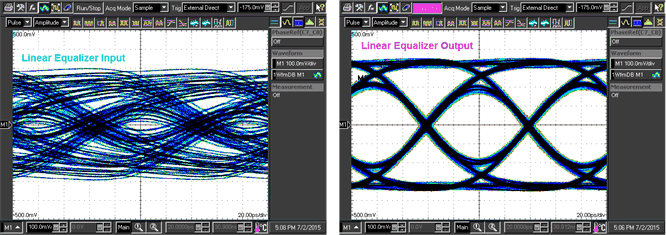SNLA236 September 2015 DS125BR111 , DS125BR401A , DS125BR820
2.3 Linear Equalization Effects on Jitter Due to Attenuation
A key benefit of linear equalization is how it can have a positive impact further down the channel after significant energy has been attenuated away from the initial transmit signal. By moving the point of linear equalization 14” from the SAS-3 transmitter it is easy to see just how much jitter accumulates after only ~ 14 dB of attenuation at 6 GHz. When combined with a typical Reference 1 waveform, the DS125BR820 significantly improves the eye opening and reduces jitter. This is shown in Figure 4.
 Figure 4. Waveforms Before and After a Linear Equalizer
Figure 4. Waveforms Before and After a Linear Equalizer The combination of Expander package, transmission line traces, and vias can easily add up to a total attenuation of 10-12 dB when connecting a SAS Expander to a set of external miniSAS-HD connectors.